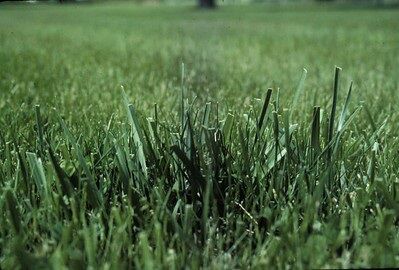Sunscald damage to trees
By David G. Hallauer
Kansas State University Research and Extension
When a tree doesn’t perform up to expectations, it can sometimes be difficult to pin the issue on a single cause. Drought stress, for example, seems to make even a small problem seem a lot larger. Sunscald is one such problem.
Seen mostly on younger trees, any of our smooth barked species (honeylocust, ash, oak, maple, willows and just about any of our fruit tree species) are considered susceptible to sunscald and bark cracks. Damage from sunscald may appear pretty mundane, especially at first. Over time, noticeable declines in tree performance may be noted. Damage may be compounded by drought or heat stress.
Damage from sunscald typically occurs following sunny, warm days we often see in winter. You know the ones: a breath of spring in the midst of a blustery winter? Unfortunately, those winter weather breaks can cause big problem. Georgia research on peach trees has shown that the ‘sunny’ side of the tree’s trunk might get as much as forty degrees warmer than the side in the shade. For us, that means that the south or southwest side of many of our thin barked trees see a marked outer bark temperature difference than the north side. When that occurs, the warmed side may lose cold hardiness, resulting in cells becoming active. If that occurs late in the spring, we may warm up and be just fine. If it is followed by colder weather, especially to below freezing temperature drops at night, cells can be severely damaged.
Damage doesn’t manifest itself right way, but will often become evident in later spring, with bark tissue becoming sunken and discolored. This damaged bark will eventually crack and slough off.
The damage doesn’t have to mean guaranteed death, but trees will likely benefit from a little more attention in the future. Start by making sure that damaged trees are watered appropriately during dry weather. The damaged tissue doesn’t transfer water and nutrients well, meaning these trees will likely be the first ones stressed. If you have had the problem in the past—or want to do what you can to prevent issues—application of a light-colored tree wrap might be a good idea. Apply the wrap in October or early November starting at ground level and extending it upwards to the start of the first branches. This is especially important for young trees or trees that have experienced damage in the past. Warning: be sure to remove the tree wrap in the spring. Failure to do so can cause other problems with the tree.
For more information on sunscald, feel free to contact me via one of our District Offices or via e-mail at [email protected]. For more information on sunscald, including a picture for your reference, see the information sheet available online at hnr.k-state.edu/extension/info-center/common-pest-problems/common-pest-problem-new/Sunscald%20on%20Trees.pdf.
